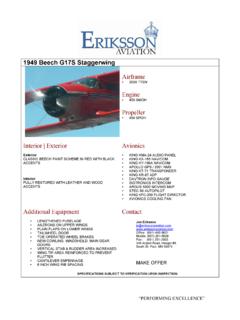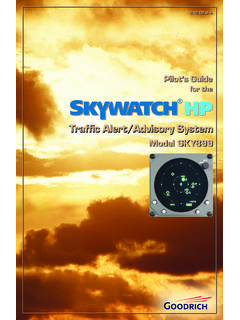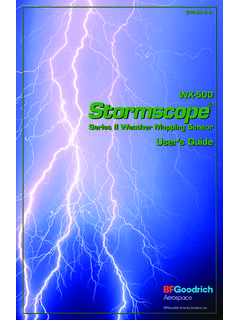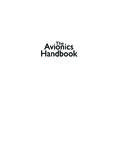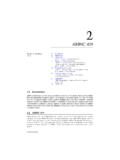Transcription of So what is FSUIPC and these Offset thingys - Sim …
1 So what is FSUIPC and these Offset thingys ?So you've got no programming skills and you've only just discovered that your PC has a but you're not after all you went to school, you know how an engine works and heck you even know how a jet engine works, roughly !But as you start to read all of the documentation that you've found on the net for Flight sim and Interfacing, it all starts to blur and sound like the most complicated thing on the planet ever. (memory + offsets ) - (floating point xaxis) - config files = _____ button assignmentseventually it all starts looking like mem #^:,floating*%:, Offset @:] blah blah blah !
2 !So I'll stop you and try to clear a few things the you've heard of FSUIPC and people keep on mentioning ' offsets ', but what are they and what do you need to know about them ? FSUIPC is a utility developed by Pete Dowson and originally created by Adam Szofran in the form of FS6 IPC. In simple terms FSUIPC allows external applications to access many of the Microsoft Flight Simulator internal variables from simple data like pitch, roll, altitude and heading right through to weather and acceleration values. In a NutshellThe FSUIPC module reserves a 65535 byte block of memory and then populates part of this memory with various pieces of data extracted from FS. External applications then have read and write access to the data in this block of memory for their own need to know about offsets and memory if you are going to be interfacing with Flight Sim via your only application or maybe via some I/O interfacing software or perhaps you want to start enhancing your sim setup by adding a few extra flat pack ' Offset ' is born Each piece of FS data is placed in the memory block at a certain location.
3 This is it's ' Offset '. You can think of the memory block as a huge empty And this shelf is divided into 65535 each compartment represents a single then takes individual pieces of flight sim data and places then in separate compartments in the memory put in simple language it's like saying : I've put the landing light data in compartment 42 If you wanted to read the landing light data you would read the value in compartment are usually specified in Hex format :byte 42 in decimal = Offset 002A in HexWritten down in a table it might look like this:DescriptionOffsetSizeLanding Lights002A1 Engine Oil Temp002B2 Airspeed002D4 Altitude00318 And this is how the memory block would 40 41 Lnd Lights Eng Oil Temp Airspeed Altitude2 For those wanting to read the values from the memory block, you would normally want to read the data into the same sized variable as it was initially written.
4 By this I mean that you would read an 8 byte altitude value into an internal variable defined as 8 bytes. Otherwise you will not have all of the data bytes need to correctly format the value, and the value that you read will be bottom line is : FSUIPC stores data from Flight Simulator in a memory block. Each piece of data is assign a number of bytes depending on the size of the value that needs to be starting location of the data is noted and known as it's ' Offset ' in the memory memory block is then made available to external applications. WideClient also sends a copy of this memory block across your network to other client pc's. Which offsets can I use ?All of the memory values that are extracted from Flight Sim and populated by FSUIPC are listed in the FSUIPC SDK.
5 The usage of each Offset is clearly stated in the documentation. Some FSUIPC offsets are 'read only' and cannot be written to. Some offsets can be written to but not intended for this purpose and your data will be overwritten during the next FSUIPC data load. Some offsets are read/write and you can write a value to these offsets to modify a function in FS. Therefore you should only used the offsets publisged in the FSUIPC SDK as documented or you might get some unexpected you can use virtually any spare Offset in the your application writes data to an Offset that is already being populated by FSUIPC or one of your other FS addons it will probably get many offsets do I require ?
6 If you are reading values from FSUIPC then you will need to reference the documentation for the product that is populating that Offset to understand how many bytes to you want to use FSUIPC to store your own value you will need to decide how many bytes it yourself - Do I need to large number, negative number or floating point 'decimal' number ? For info: 1 byte can store a number between 0 and 255 (this could also be an ascii char) 2 bytes (known as a WORD or SMALLINT) can store a number between 0-65535 unsigned or -32767 32767 signed 4 bytes (known as a DWORD or INTEGER or FLOAT32 or SINGLE depending on the usage) can store a whole number between 0-4294967296 or decimal values 8 bytes (known as a FLOAT64 or DOUBLE) can hold large decimal values.
7 If you need to store a string character this is held as it's ASCII character code 0-255, therefore a single character is stored in a Specific InformationAs a base for Sim-Avionics offsets I usually recommend starting with the 5300-53FF range. these 255 bytes have been 'reserved' in FSUIPC for this project and no other official application should be using them. - But it doesn't really matter which offsets you use as long as there are no current interface solutions are able to read/write with FSUIPC , so a typical setup to map a battery switch might be:Step 1:Press a button in your simStep 2: This is detected by your I/O card and it's software writes a '1' to a specified 3:In the Sim-Avionics file you have assigned the specified Offset to the Battery 4: The Server reads the specified Offset and enables the Battery Switch.
8 Assigning Switch InputsThere are 2 methods of using FSUIPC to control system switches in the first is the Direct Offset method. Meaning each function monitors a specific assign the offsets to the BATTERY switch and ADIRU switch you must edit the tells the server to monitor offsets 5320 and 5321 for the Battery and ADIRU switch value of 0 = Switch OFF and 1 = Switch second method is via a MultiFunction Offset this is also assigned in the time instead of assigning a different Offset for every function you just assign the MultiFunction Offset . (2 byte WORD)The server then monitors this Offset and functions are trigger depending on the value set at this = BATTERY SWITCH = OFF705 = BATTERY SWITCH = ON722 = ADIRU SWITCH = OFF723 = ADIRU SWITCH = ONOnce the function has been trigger the server sets the MultiFunction Offset back to a value of 0 ready for the next full Multi-Function list can be found in our User Manual5[FSUIPC_INPUTS]BATTERY_SWITCH=532 0 ADIRU_SWITCH=5321 [FSUIPC_MULTI_FUNCTION] MULTI_FUNCTION=53 FEAssigning OutputsJust like the switch inputs an FSUIPC Offset can be assigned to an output is again made in the the FSUIPC_INPUT section there is an FSUIPC_OUTPUT section.
9 And it's here you can assign an Offset to a note: at this stage the output value represents the status of assigned system and not the overhead light state. To clarify, on an aircraft overhead, a light usually illuminates when a system is inoperative or there is a failure. In this example Offset 53C0 will = 1 when the battery system is ON and = 0 when the battery system is OFF. This is likely to be the opposite of what you want your battery 'light' to do on your overhead you can either allow for this in the code for your interface solution or use some of the additional assignment options in the Item = Offset $invert (1 or 0) b(bit 0-7)// BATTERY=53C0 (if Battery = ON then Offset 53C0 = 1)// BATTERY=53C0$1(if Battery = OFF then Offset 53C0 = 1)// BATTERY=53C0b2(if Battery = ON then Offset 53C0 = 4) (bit 2)// BATTERY=53C0b00000100(if Battery = ON then Offset 53C0 = 4) (bit 2)// BATTERY=53C0$1b3 (if Battery = OFF then Offset 53C0 = 8) (bit 3)// BATTERY=53C0$1b00001000 (if Battery = OFF then Offset 53C0 = 8) (bit 3)
10 This would invert the Offset value. Now 53C0 will = 0 when the battery system is ON and = 1 when the battery system is your interface solution you can now say something like :if 53C0 = 1 Battery_Light = ONelseBattery_Light = OFF Don't Panic!6 [FSUIPC_OUTPUTS] BATTERY=53C0 [FSUIPC_OUTPUTS] BATTERY=53C0$1 Using Offset - bits A 'BIT' is a single number or a 'virtual' switch. It can either be OFF = 0 or ON = 1A 'BYTE' contains 8 bits00000000In normal decimal notation we count in 10's. Each column is a multiple of 10 and each digit can by 0-9 As a number gets more zeros added to it we multiply by 10, One, Ten, One Hundred, One Thousand etcBinary work slightly different as a bit can only have a value of 0 or a bit moves left in the 'byte' it's value doubles, then just like in decimal you add up all of the 'ON' bits to calculate it's decimal 64 32 16 8 4 2 1 000000000 100000001 200000010 300000011 1300001101 7501001011 25511111111so what does this mean ?
